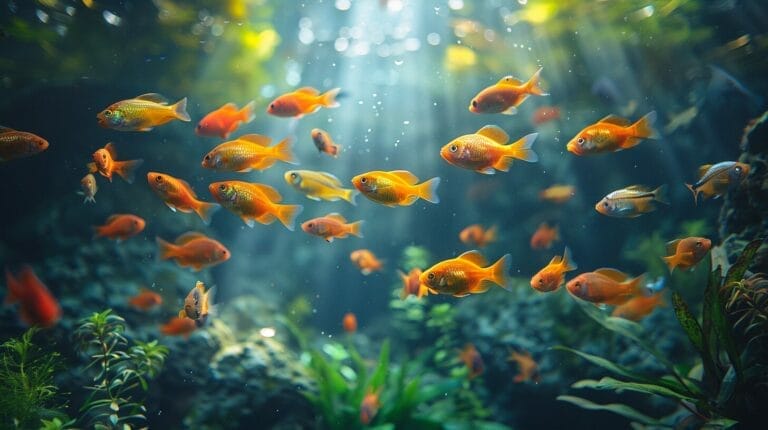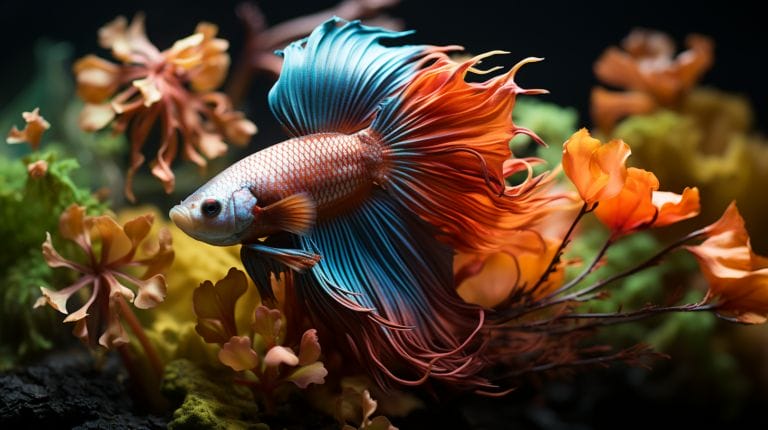How to Lower Nitrite in Fish Tank: All You Need to Know
Navigating the world of fish tank maintenance is a bit like being a marine biologist and a chemist rolled into one: constantly juggling various factors to ensure the health and longevity of our aquatic friends. One of these crucial factors is nitrite levels in the water. Too much nitrite can be harmful, even fatal, to fish. So, how do we effectively reduce nitrite and ammonia levels?
In our ‘How to Lower Nitrite in Fish Tank’ guide, we will explore the causes of high nitrite levels, learn how to test for them, and discover practical strategies to lower them.
Key Takeaways
- High nitrite levels in fish tanks can be toxic and harmful to fish, causing distress and health issues.
- Overfeeding, overstocking, improper tank cleaning, and inadequate filtration can contribute to elevated nitrite levels.
- Regular testing and monitoring of nitrite levels is important to maintain a healthy aquatic environment.
- Strategies to reduce nitrite levels include regular water changes, optimizing filtration systems, promoting beneficial bacteria, and avoiding overfeeding.
Understanding Nitrites and Their Impact on Fish Tank Health

To comprehend the health of our fish tanks, it’s crucial to grasp the role of nitrites and the potential risks they pose when levels become excessive. Nitrite in aquariums typically forms through the breakdown of fish waste and uneaten food by beneficial bacteria. These nitrites are a natural part of the nitrogen cycle, but maintaining a balance is the key to the wellbeing of our aquatic friends.
Excessive nitrite levels in your tank can be a silent killer. They’re toxic to fish and can cause significant health problems, even death, if not addressed promptly. Fish exposed to high nitrite levels often show signs of distress such as rapid gill movement, lethargy, or loss of appetite. Progressive damage can lead to long-term health issues, affecting their freedom to thrive in their watery world.
Identifying Potential Causes of High Nitrite Levels in Your Aquarium
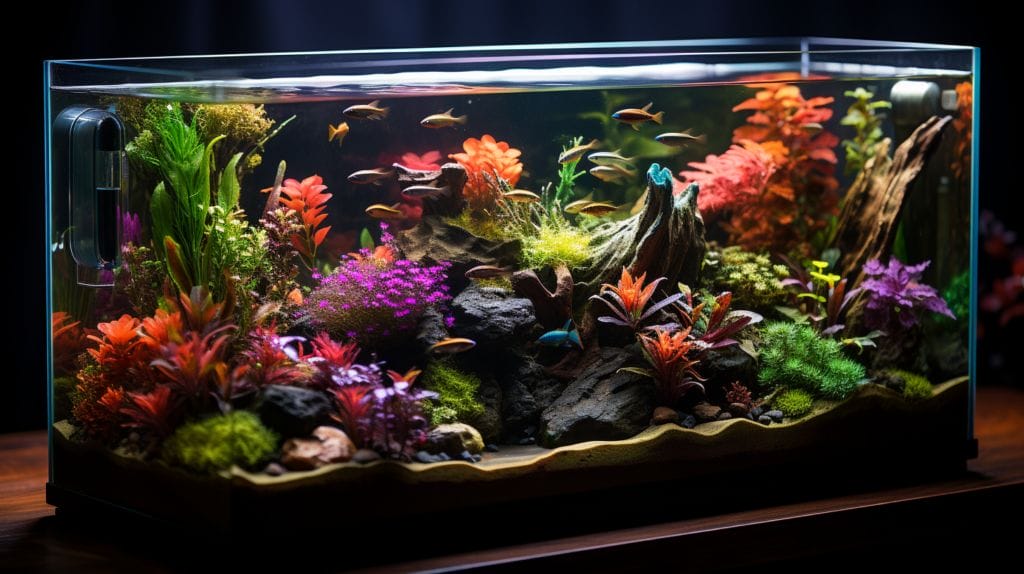
Let’s delve into the potential causes of high nitrite levels in your aquarium. Identifying these sources is a significant step towards maintaining a healthy aquatic environment.
- Over-feeding is one of the key contributors to a surge in nitrite levels. If you feed your fish more than they can consume, the uneaten food decomposes. This process not only releases nitrites into the water but also causes a rise in ammonia levels. This can result in harmful nitrite levels in aquariums.
- Overstocking is another potential cause. When there are too many fish in the tank, they produce more waste than the beneficial bacteria can break down. This leads to a buildup of nitrites, causing the nitrite levels to become too high.
- Improper tank cleaning practices can also lead to elevated levels of nitrite. If the tank isn’t cleaned regularly or correctly, waste builds up and decays, resulting in a spike in nitrite levels. This is particularly true for new tanks that don’t have adequate filtration systems necessary to break down nitrites.
Testing and Monitoring Nitrite Levels in Your Fish Tank
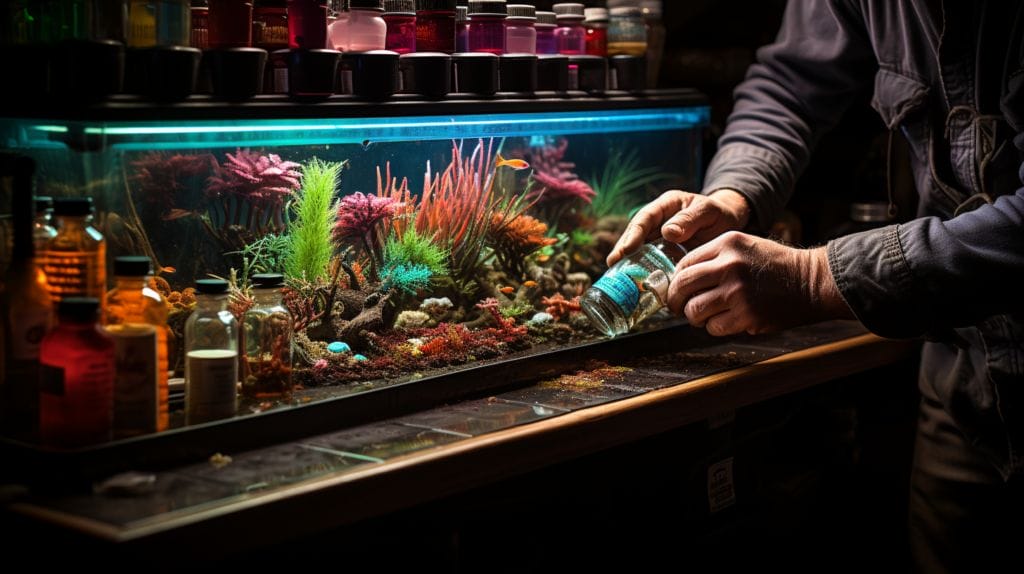
Keeping tabs on nitrite levels in your fish tank is crucial, and regular testing can help ensure the health and safety of your aquatic pets. We must be vigilant in testing and monitoring nitrite levels in your fish tank to prevent potential health risks for our fish.
It’s crucial to have the right tools for the task. An API nitrite test is a reliable and straightforward way to measure nitrite levels in a freshwater aquarium. It’s easy to use, accurate, and can give us a fast indication of the water quality.
When testing, we’re looking for specific water parameters. These parameters, including ammonia levels, provide valuable information about the overall health of our freshwater fish aquarium.
- Nitrites should always be 0 in a cycled tank.
- If nitrites are present, it indicates that the tank is still cycling.
- High nitrite levels can indicate a problem with the tank’s biological filter.
Understanding the results of our tests is crucial, too. Nitrite levels above 0 are harmful to fish and can lead to stress, disease, or even death. A safe nitrite level is always 0.
Practical, Effective Strategies to Reduce Nitrite Levels in Aquariums

Now that we’ve understood how to monitor and interpret nitrite levels in our fish tank, let’s tackle practical and effective strategies to reduce these levels when necessary.
- Performing regular water changes is among the most reliable solutions to keep both nitrite and ammonia levels at bay. By replacing part of the water in an established tank, we dilute the nitrite concentration. However, we’re not advocating for full water changes; a 25% change on a weekly basis usually suffices.
- Optimizing the aquarium filtration should be an essential part of our strategy. Filter bacteria play a crucial role here; they convert harmful nitrites into less harmful nitrates. Ensuring our filter is efficient and well-maintained is key.
- Beneficial bacteria can also significantly reduce nitrite levels in aquariums. They live in the gravel and decorations and help maintain a healthy ecosystem. Therefore, we should try not to clean everything at once, or we might disrupt their colonies.
- Lastly, we should not overlook the importance of a feeding schedule. Overfeeding can lead to more waste, which in turn produces more nitrites. By feeding our fish only what they need, we can keep nitrite production in check.
Long-term Measures to Prevent High Nitrites in Fish Tanks Naturally
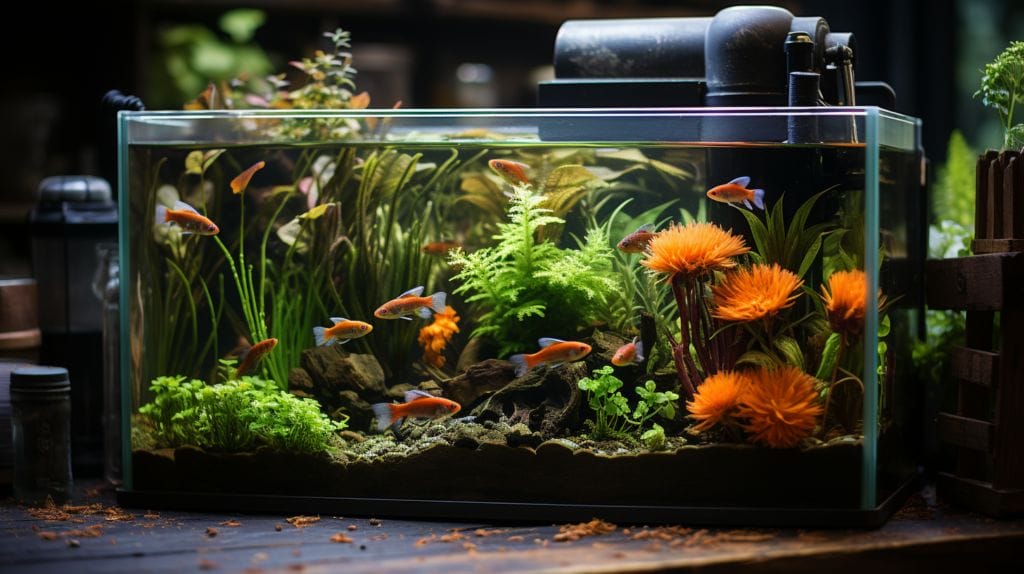
Let’s delve into some long-term measures that naturally keep nitrite levels in check, ensuring our fish tanks remain healthy and thriving.
Keeping your tank clean and well-maintained is a crucial factor in preventing nitrite buildup. In order to keep nitrite levels under control, embracing a routine of frequent water changes can provide a healthier, more enjoyable environment for the fish in your tank.
Here are a few practical tips:
- Suitable Stocking: Avoid overcrowding your tank. The more fish, the more waste, leading to higher nitrite levels. Regular checks on fish population can help maintain a balanced environment.
- Embracing Live Plants: Live plants absorb nitrites, effectively acting as natural nitrite busters. Including them in your aquarium not only beautifies the space but also contributes to nitrite control.
- Regular Tank Maintenance: This includes frequent water changes to dilute high levels of nitrite, cleaning gravel, and checking equipment regularly. A clean tank means happy, healthy fish, and lower nitrite levels.
One critical aspect of maintaining low nitrite levels is cultivating beneficial nitrifying bacteria. These bacteria convert harmful nitrites into less harmful nitrates, helping keep nitrite levels at bay. Quarantine new fish before introducing them into your tank to prevent potential nitrite spikes.
Can Tadpoles Help Lower Nitrite Levels in a Fish Tank?
Raising tadpoles with confidence can actually help lower nitrite levels in a fish tank. Tadpoles are great at consuming excess algae and organic matter, which can contribute to elevated nitrite levels. Having tadpoles in your tank can help maintain a healthier environment for your fish.
Conclusion
So, we’ve covered the ropes on handling nitrites in your fish tank. We’ve identified the causes, learned how to test and monitor nitrite levels, and explored practical strategies for reducing nitrites.
We also got a grip on long-term measures to prevent high nitrites naturally. Remember, maintaining a healthy fish tank is a continuous process, but with these tips, it’ll be a breeze.
Happy fish keeping!
Frequently Asked Questions
What causes high nitrite levels in aquariums?
High nitrite levels in aquariums can often be triggered by the decomposition of dead plants, ammonia, and other organic matter present in the water column.
How can I lower nitrite in my fish tank?
To lower nitrite levels in your fish tank, you can perform regular water changes, use water conditioners, and ensure that your filter is properly cycled and functioning.
What are the dangers of having high nitrite levels in my aquarium?
Elevated ammonia and nitrite levels can be harmful to fish, causing stress and potentially leading to nitrite poisoning, which can be deadly if not addressed promptly.
How can I avoid high nitrite levels in my fish tank?
To avoid high nitrite levels, make sure not to overfeed your fish, maintain a cycled filter, and regularly test and monitor the ammonia and nitrite levels in your aquarium water.
How do water conditioners help in reducing nitrite levels in aquariums?
Water conditioners help in reducing nitrite levels by binding the nitrites and rendering them harmless to fish, allowing them to be removed through filtration or water changes.


